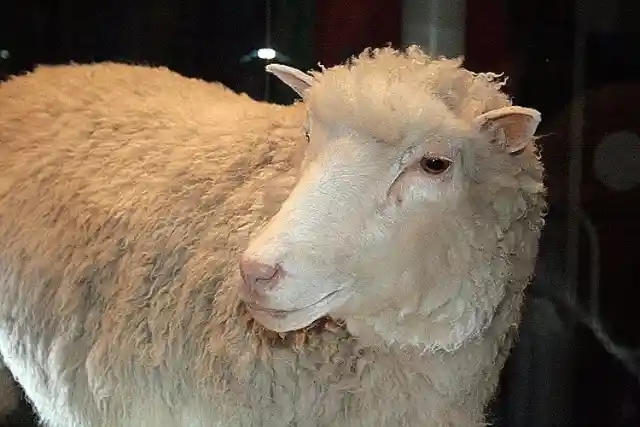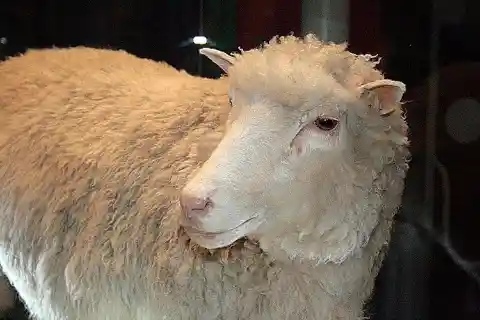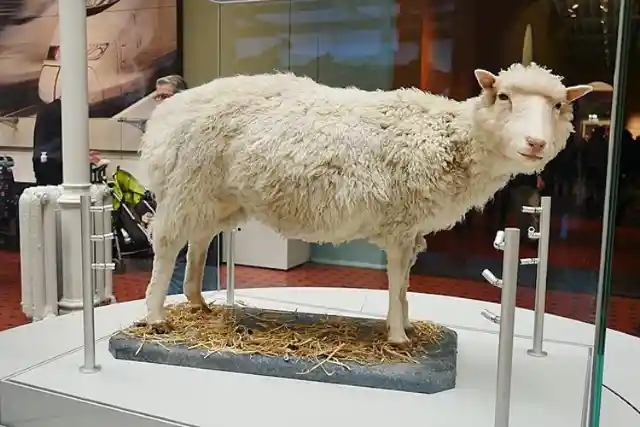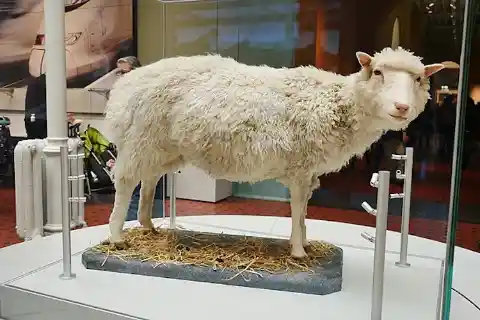Just A Few Attempts
Scotland is the home of the first cloned sheep. Born in the summer of 1996 at a research facility called the Roslin Institute, her name was Dolly, and the news of her existence intrigued the entire world. Her creators made history when they cloned the first adult mammal cell.
Cloning has always been both appealing and controversial to scientists, as well as to the general public. It was such a long-running elusive idea, and when the Roslin Institute presented Dolly, the world was astounded and madly anxious to know more.


Dolly came from a mammary gland cell of a 6-year-old Finn Dorset sheep. It took one year and 277 attempts before Dolly was finally born in 1996, and it wouldn’t be until the beginning of 1997 that the Roslin Institute would reveal her to the world.
The delay in telling the public was much needed. The questions came flooding in and society’s curiosity was unrelenting. By this time, the researchers had compiled their data and research, and they were prepared to give answers to thousands of questions. It was not a simple process—harder to explain, and even harder to understand.
The Explanation
Though it was previously only thought possible for cloning to be done with embryonic cells, Dolly was cloned from a somatic cell. The researchers explained that they had retrieved the mammary gland cell, extracted the nucleus, and implanted it into the egg cell of a female Scottish Blackface sheep. The nucleus from this cell had already been removed and was replaced by the mammary gland nucleus and then fused.
With electric shock, the researchers were able to divide the cell to form the blastocyst. They implanted the resulting embryo into a different Scottish Blackface sheep, and eventually, Dolly was born.
The Minds That Made Dolly
The massive team that made it all happen was composed of researchers, embryologists, biologists, veterinarians and veterinary technicians, surgeons, and farm staff. The Roslin Institute cloning team supervisor was Sir Ian Wilmut. After Dolly was born, Wilmut became world famous for his achievements.
The other three notable people involved in Dolly’s creation were a scientist named Professor Keith Campbell, and two technicians named Bill Ritchie and Karen Mycock. The two technicians got much less recognition for their work in the Dolly project.
Dolly The Sheep & Dolly The Singer
Unsurprisingly, Dolly was named after the unforgettable country singer, Dolly Parton. The research team thought it was appropriate to name the cloned sheep after Dolly, in honor of her voluptuous figure, because the sheep was created from a mammary cell.
As it turned out, the sheep had more in common with Dolly Parton than that. Dolly the sheep became wildly famous, just like Dolly the Singer. People all over the world wanted more of her, and she made many media appearances. She had to be watched closely at the Roslin Institute, for her own safety.
For the most part, Dolly was still able to live like a normal sheep. She eventually reproduced with a Mountain Ram named David. She had a total of six lambs, including a pair of twins and a set of triplets. Her firstborn lamb was called Bonnie.


Dolly’s Demise
After five years of life, Dolly began struggling to walk. Eventually, the researchers would find the cause to be arthritis. The media went wild, and rumors flew that Dolly was aging prematurely because she was cloned from an adult cell. However, there was no factual evidence that this was true, and after being given regular anti-inflammatory treatments, Dolly was just fine.
Unfortunately, two years later, Dolly started coughing. The researchers tested her, and a CT scan identified some serious tumors in her lungs. The tumors were caused by Jaagsiekte sheep retrovirus (JSRV), which is very common in sheep. In Dolly’s best interest, the researchers decided to euthanize her. She was only six when she died – half as old as an average sheep.
Dolly’s Gift To The World
Dolly the sheep was an inspiration to the cloning industry and to science in general. She paved the way to further cloning research, like ordinary cell cloning, and the idea that body parts can be grown to cure lethal diseases. She has given researchers the knowledge and basis to continue cloning livestock for agricultural and medical testing. To this day, her short but meaningful existence is still considered one of the major developments in modern biotechnology.